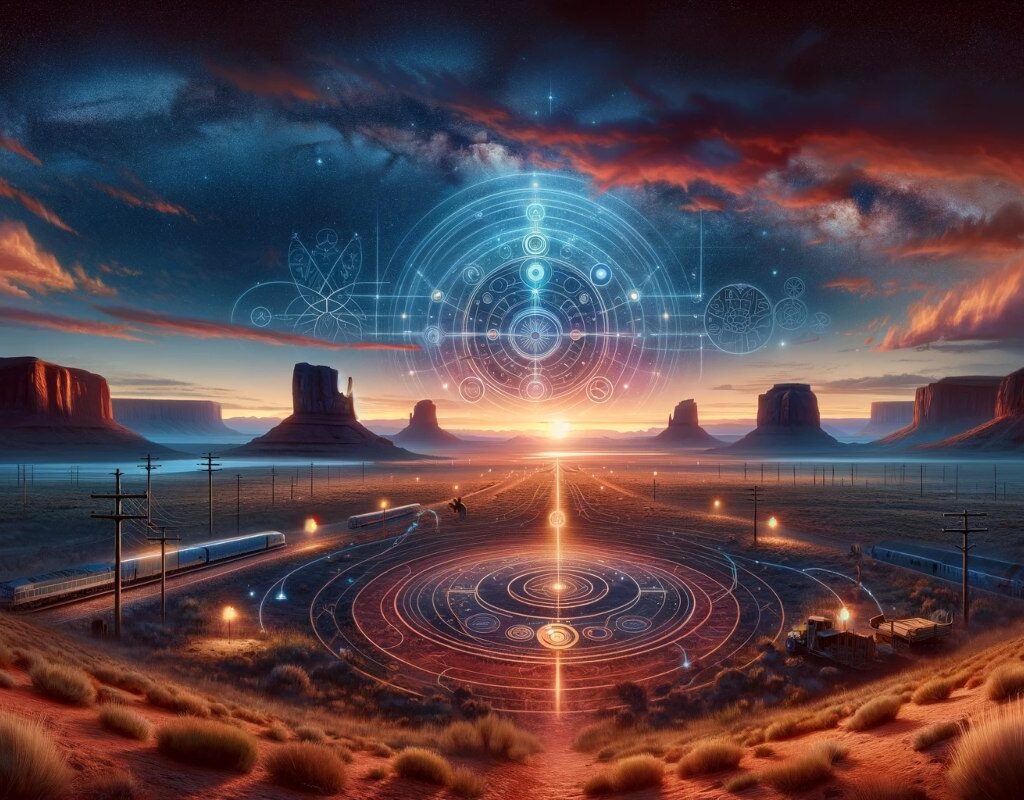In 1959, a manuscript containing Hopi prophecies circulated among Methodist and Presbyterian churches in the United States. Later, Frank Waters published these in his book “The Book of the Hopi” in 1963. These prophecies, according to the narrative, originate from White Feather, an elderly Hopi of the Bear Clan, who shared his wisdom with David Young, an ecclesiastical pastor, in the desert near Taos, Mexico.
The Legacy of White Feather: Hopi Prophecies and the Search for the Lost White Brother
Pahana and the Revealed Hopi Prophecies: Interpreting Ancient Predictions in the Modern Era
During his encounter with Young, White Feather revealed that he had traveled across the country, learning from various cultures and gathering stories and prophecies.
He recounted how his people’s prophecies have been fulfilled over time. According to him, these prophecies predicted the decline of Hopi traditions, such as the ceremonies celebrating their origins and existence in the Fourth World. White Feather expressed concern about the future of these traditions and the imminent arrival of the Fifth World.
The central figure of the Hopi prophecies is Pahana, the Lost White Brother, whose arrival is foretold. Unlike contemporary white men, whom White Feather characterized as cruel and greedy, Pahana will bring peace and will be recognized by a sacred piece that identifies him as such.
He concluded his story expressing the belief that the end of the Fourth World is imminent and that the advent of the Fifth World is near.
The Nine Signs of White Feather
Interpreting the Apocalyptic Signs in the Teachings of White Feather
Each sign, interpreted by the elder Hopi White Feather, symbolizes significant cultural and technological events.
- First Sign: warns about the arrival of the white man, different from Pahana. They will seize lands and use fire as a weapon.
- Second Sign: the appearance of wooden carts, an event witnessed by White Feather’s father, symbolizing Western expansion.
- Third Sign: the arrival of long-horned cattle, introduced by European colonizers.
- Fourth Sign: describes railroads as “steel snakes”, representing the industrial revolution and railroad expansion.
- Fifth Sign: a metaphor for telephone and electrical networks, seen as a “web” covering the sky.
- Sixth Sign: refers to modern highways, compared to rivers of stone reflecting the sun.
- Seventh Sign: prophesies about ocean pollution, where the sea turns black, and marine life suffers.
- Eighth Sign: adoption of indigenous lifestyles and appearances by the youth, possibly related to the hippie movement.
- Ninth Sign: announces the fall of an object from the sky, compared to a blue star, marking the end of Hopi ceremonies and the beginning of the Fifth World.
White Feather concludes that these signs portend great destruction, with global conflicts and natural disasters. He mentions nuclear tests in U.S. deserts as evidence of this. However, he assures that those who understand these prophecies and live in harmony with the Hopi will be safe.
Finally, he predicts the arrival of Pahana, who will initiate the Fifth World, sowing wisdom and understanding. White Feather, aware of his advanced age, regrets that he will not witness these events but suggests that others, like David Young, might.
Interpretations and Fulfillment of the Seven Hopi Prophecies
Hopi Prophecies and Modernity: From Skylab’s Impact to the Quest for Harmony with Nature
After sharing his prophecies, White Feather fell silent. Upon reaching their destination, Reverend David Young stopped the car, and White Feather got out, marking the last time they would see each other. Young passed away in 1976, not witnessing the fulfillment of the most significant prophecies.
The Hopi prophecies are interpreted as follows:
- First Prophecy: represents firearms, a symbol of the destructive power of the colonizers.
- Second Prophecy: refers to the first wagons, marking the beginning of western expansion.
- Third Prophecy: pertains to cattle introduced by Europeans, altering the native ecosystem.
- Fourth Prophecy: symbolizes the railroad representing industrialization and change.
- Fifth Prophecy: speaks of aerial cable lines, a metaphor for communication and global interconnection.
- Sixth Prophecy: describes roads and their reflection of the sun, highlighting advancements in transportation infrastructure.
- Seventh Prophecy: warns about oil pollution of seas, rivers, and oceans, a wake-up call about the environmental impact of human activity.
These seven prophecies are considered fulfilled. However, interpretations of the last two vary:
- Eighth Prophecy: associated by many with the hippie movement, though others believe it will be fulfilled with future migrations towards a more natural life.
- Ninth Prophecy: some relate it to the fall of the Skylab Space Station in 1979, but others argue that it is yet to be seen, awaiting a more impactful event.
The Hopi prophecies also warn about imbalances in the laws and forces of the universe, predicting natural and social disasters. They are interpreted as allegories and teachings for humanity, urging a reconsideration of consumerist and destructive lifestyles.
The Hopi wisdom invites us to seek a balance with nature to avoid potentially irreversible problems.





